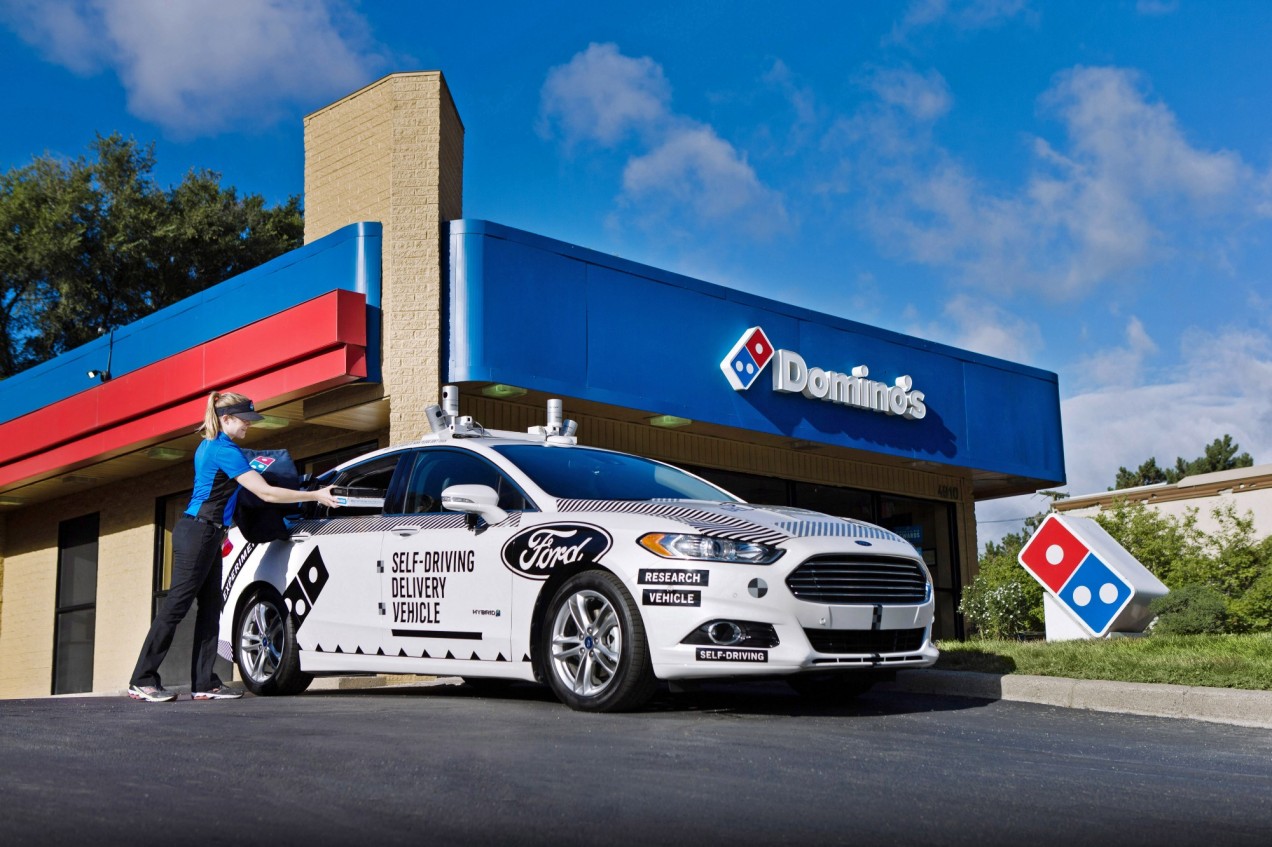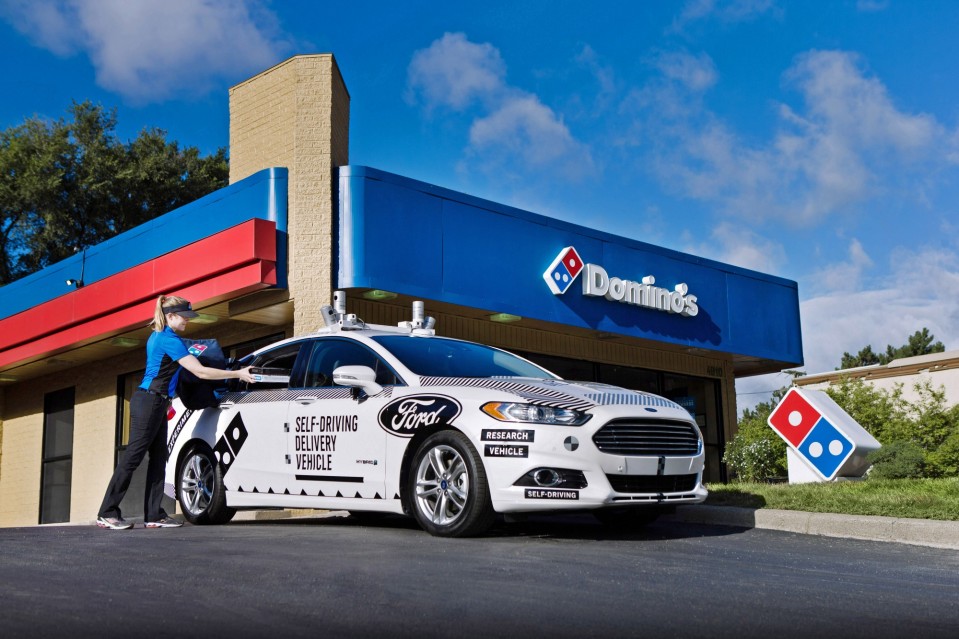

Intelligent Machines
Apparently, People Say “Thank You” to Self-Driving Pizza Delivery Vehicles
And other lessons from Ford’s experiment with autonomous cars.

You wouldn’t think Jim Farley would spend a lot of time thinking about pizza delivery, given his title as Ford’s executive vice president and president of global markets. But Farley, who oversees the business strategy for the car maker’s autonomous-vehicle unit, believes that delivering things such as pizza will be a key application for self-driving cars in the future, and he want to learn how people behave in such a transaction.
Last summer, Ford worked with Domino’s Pizza on a test in Ann Arbor, Michigan, where it delivered pizza to randomly chosen customers in a self-driving Ford Fusion hybrid. An operator was inside the car, and a regular human-driven car trailed behind, videotaping the drive. Customers had to approach the car and enter a number on a touch screen on the side of the vehicle to get their pizza.
Speaking at CES, the annual consumer electronics show, in Las Vegas this week, Farley acknowledged that the idea sounds silly, “but we learned so freaking much,” he said.
Apparently, most people say “thank you” to the car after getting their pizza. (“We probably want to have some UX around that, because that’s cool. It’s very human,” Farley said.) Though customers weren’t comfortable tapping in the last four digits of their credit card number as a code to open a window so they could grab their pizza, they were fine using the last four digits of their phone number.
In the summer, most people walked out to the car barefoot. “That sounds really weird, but that has a big impact on where we put the vehicle,” Farley said. “They don’t want to step on the street; there’s glass, there’s all sorts of stuff.”
All that will help Ford shape how the company builds an autonomous vehicle for delivering products. “We have to understand what the UX is on the outside of the vehicle,” he said. “Should it be a key pad? Should it be a voice assist?”
The company hopes to learn more—both about how customers interact with the cars and about how it should set up the interior of delivery-centric vehicles—in a test with delivery service Postmates, which will get started by the end of March in an as-yet-unnamed city.